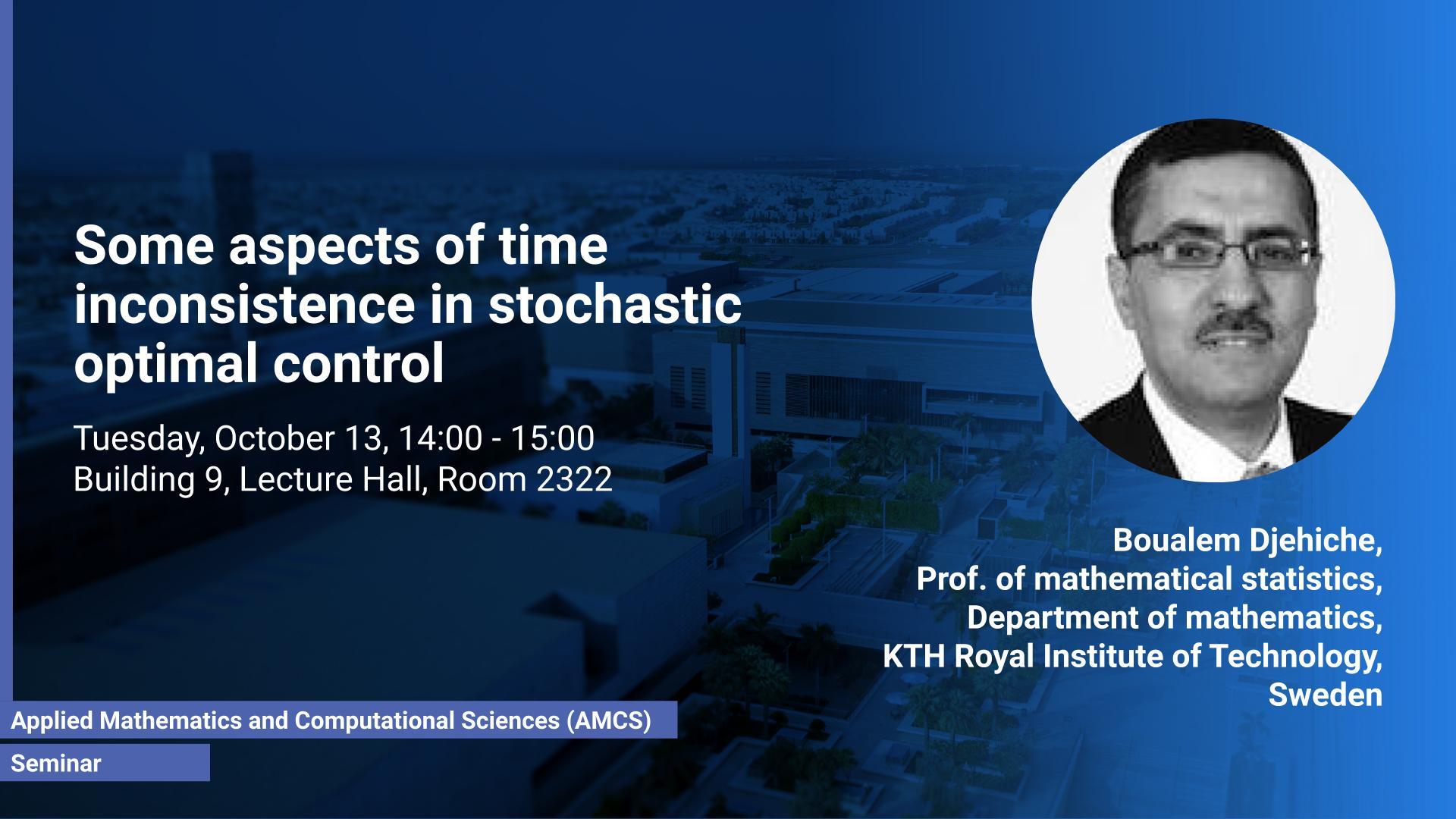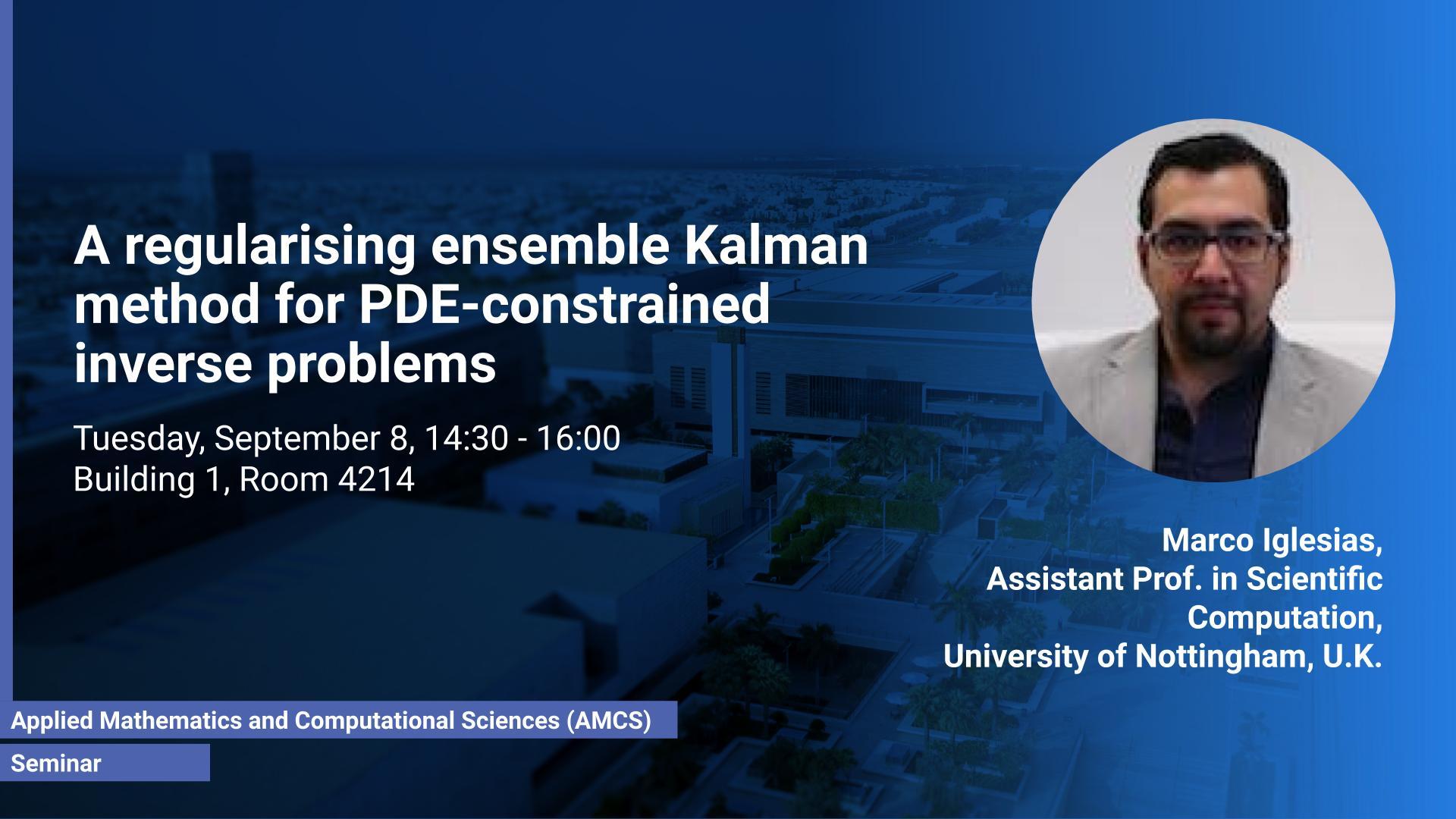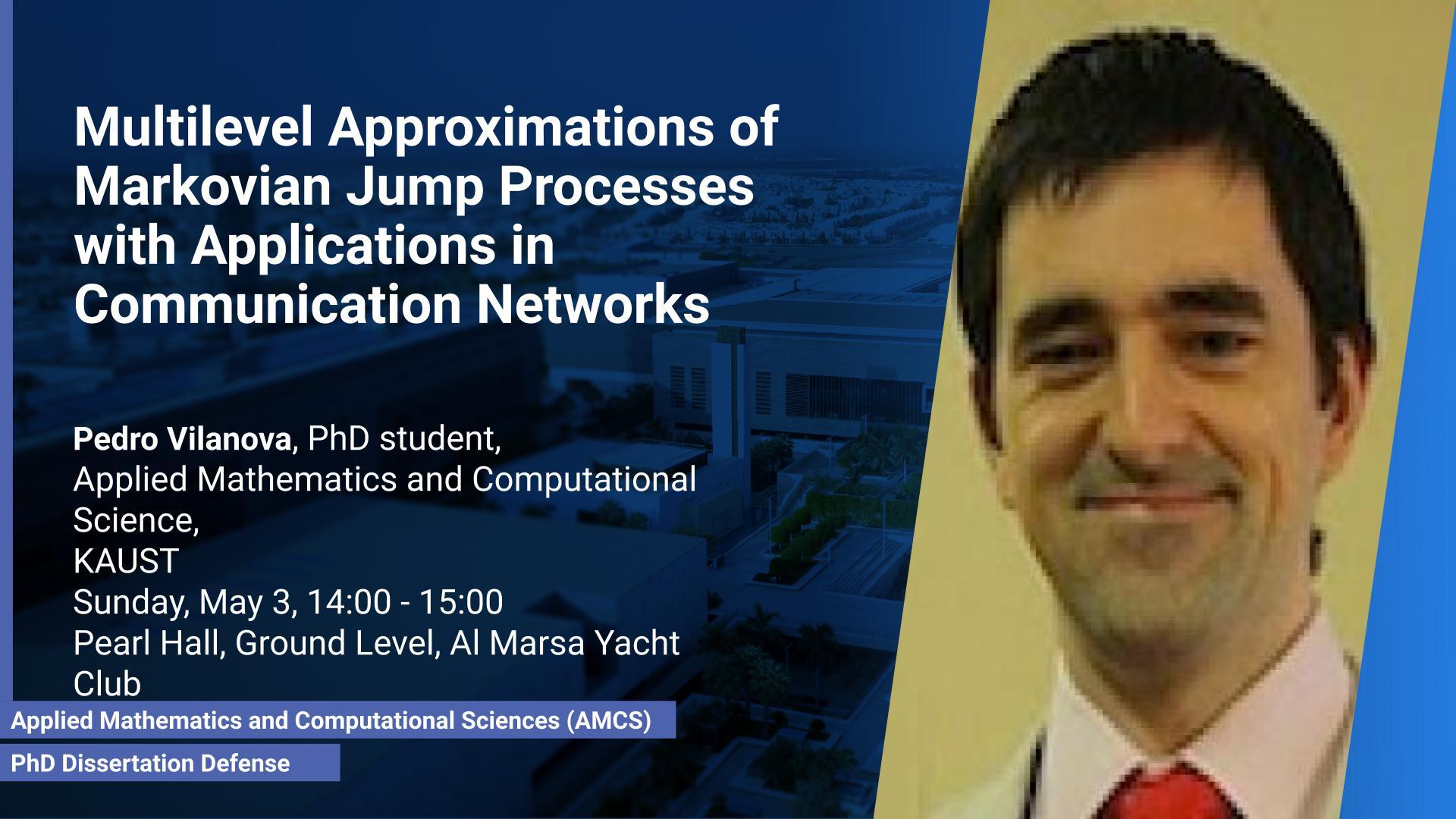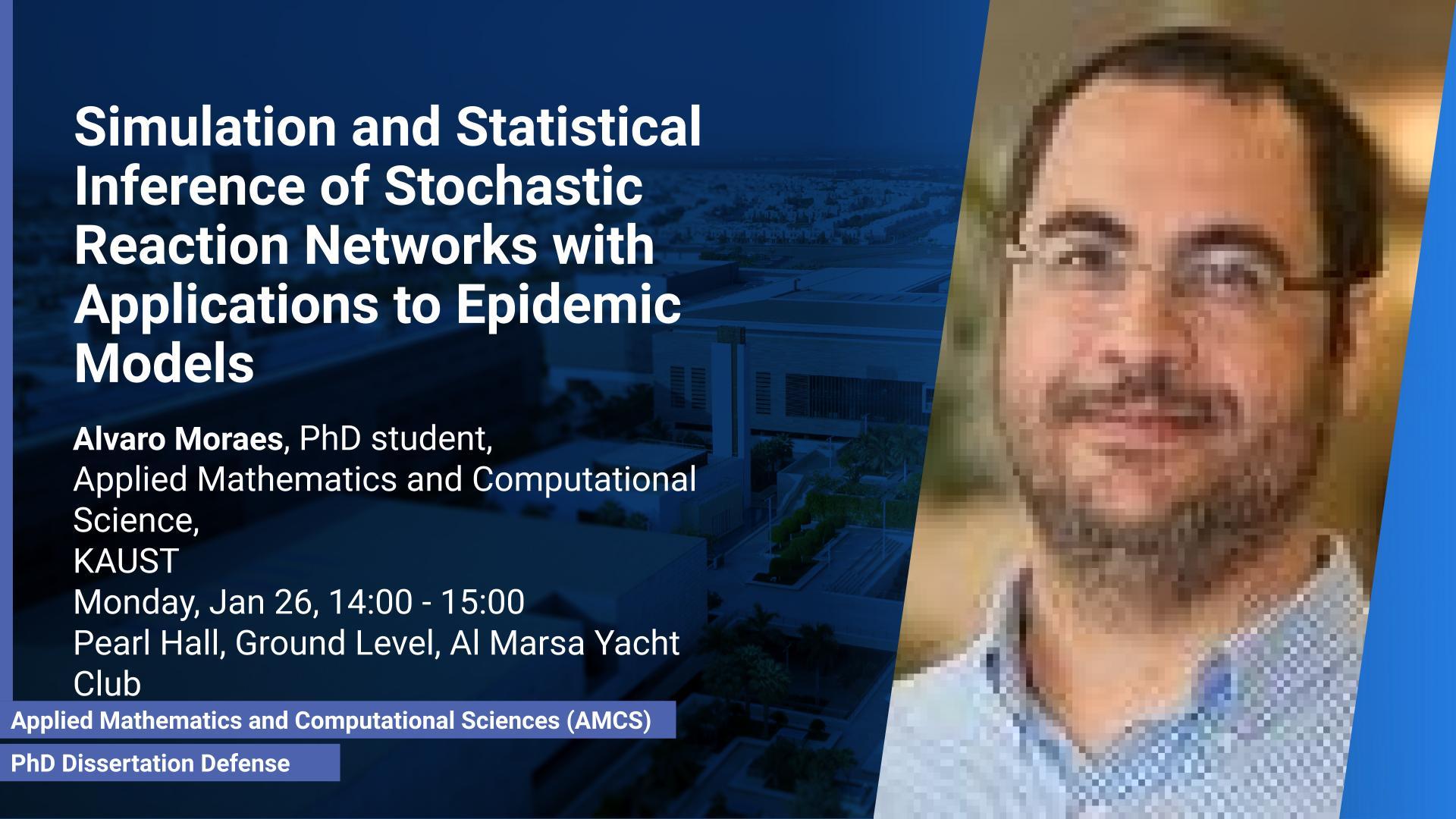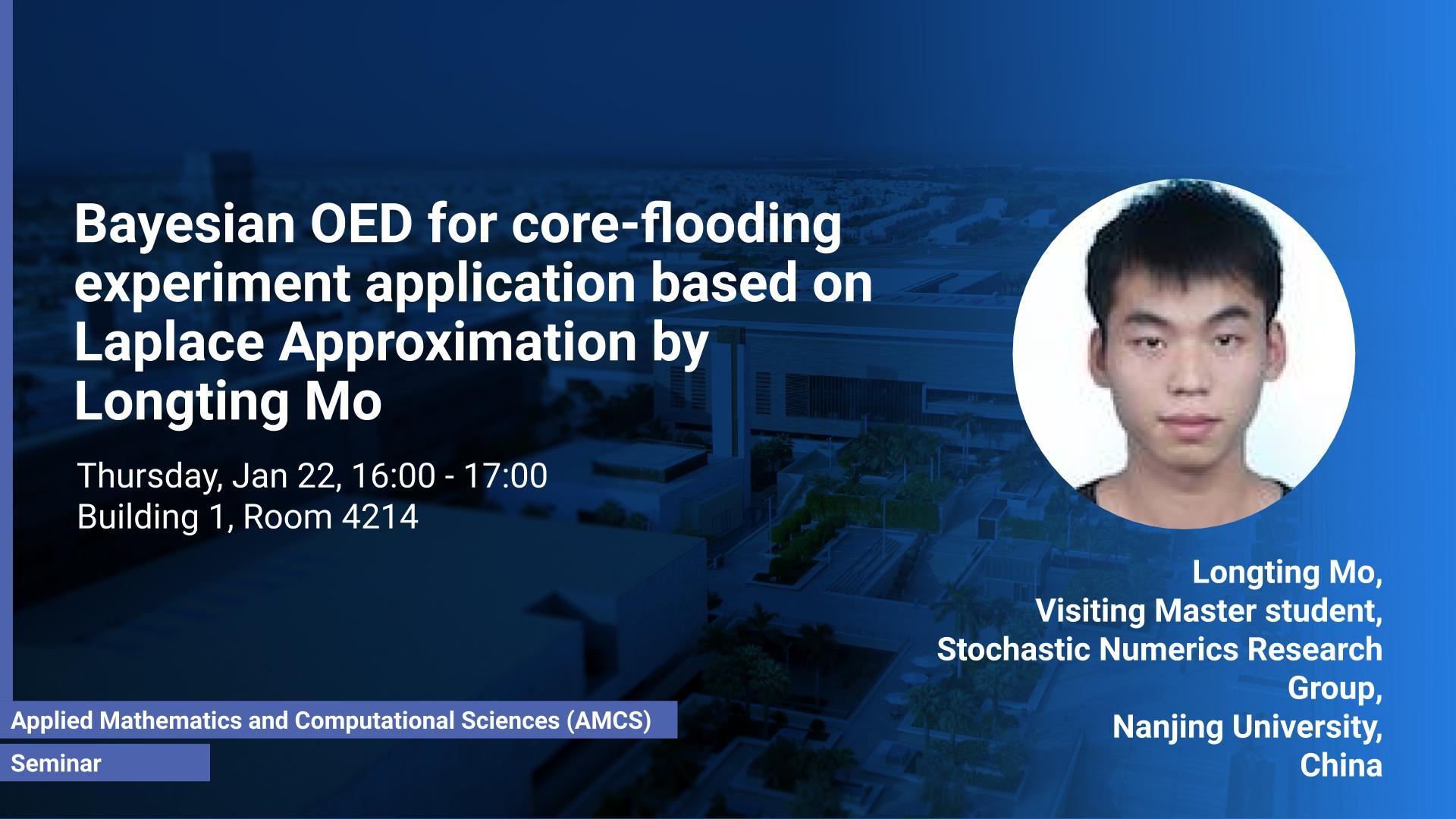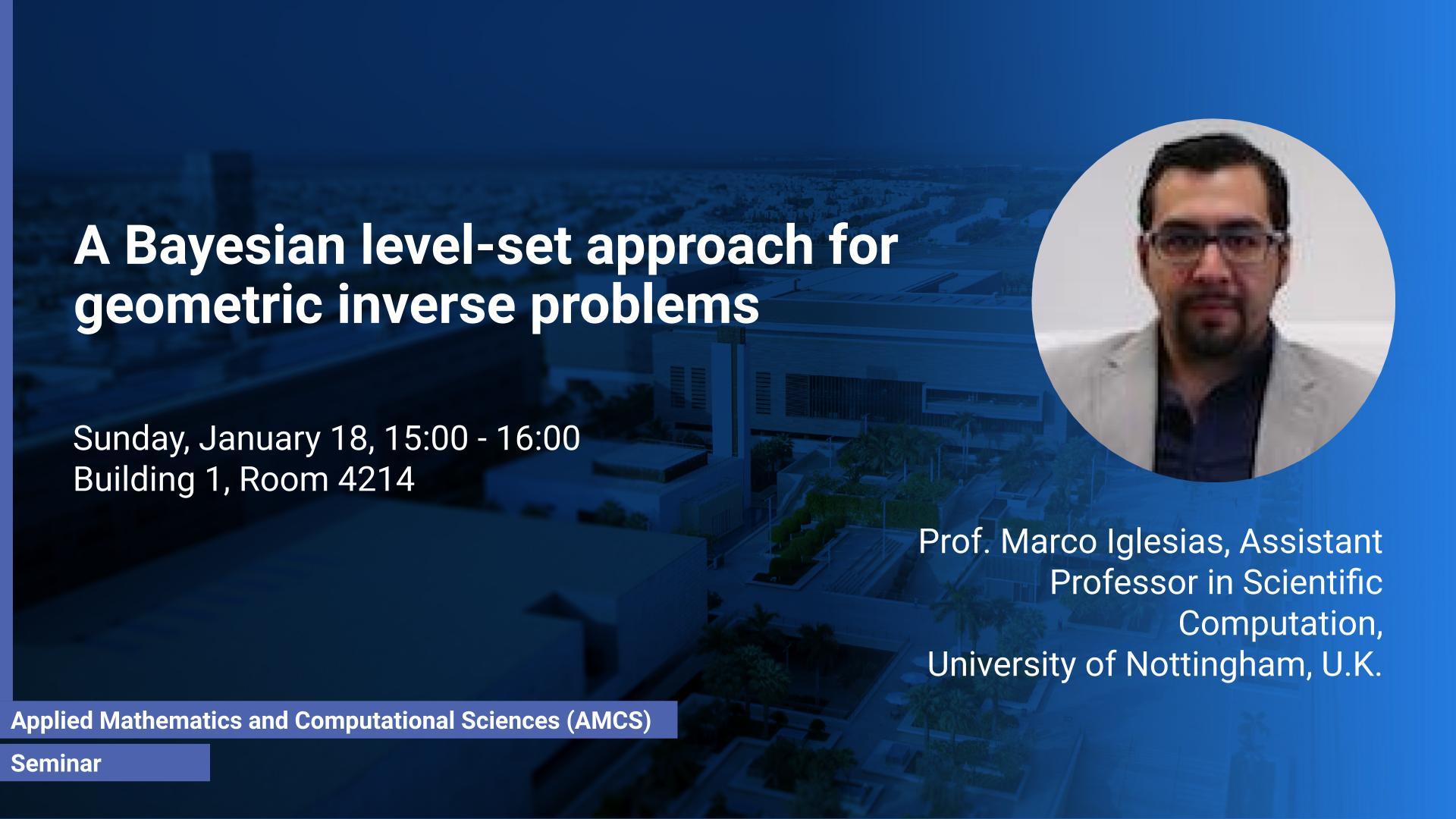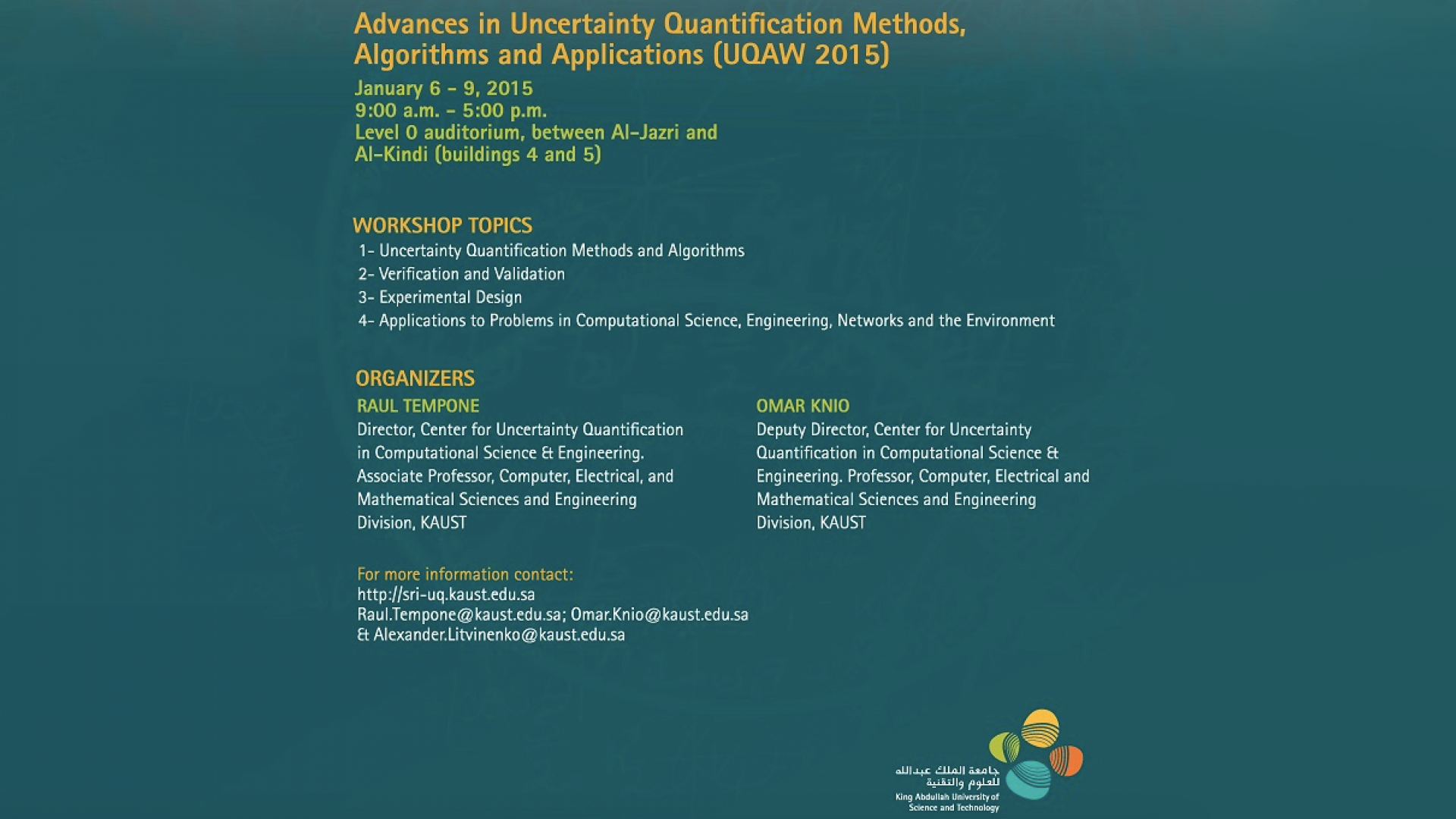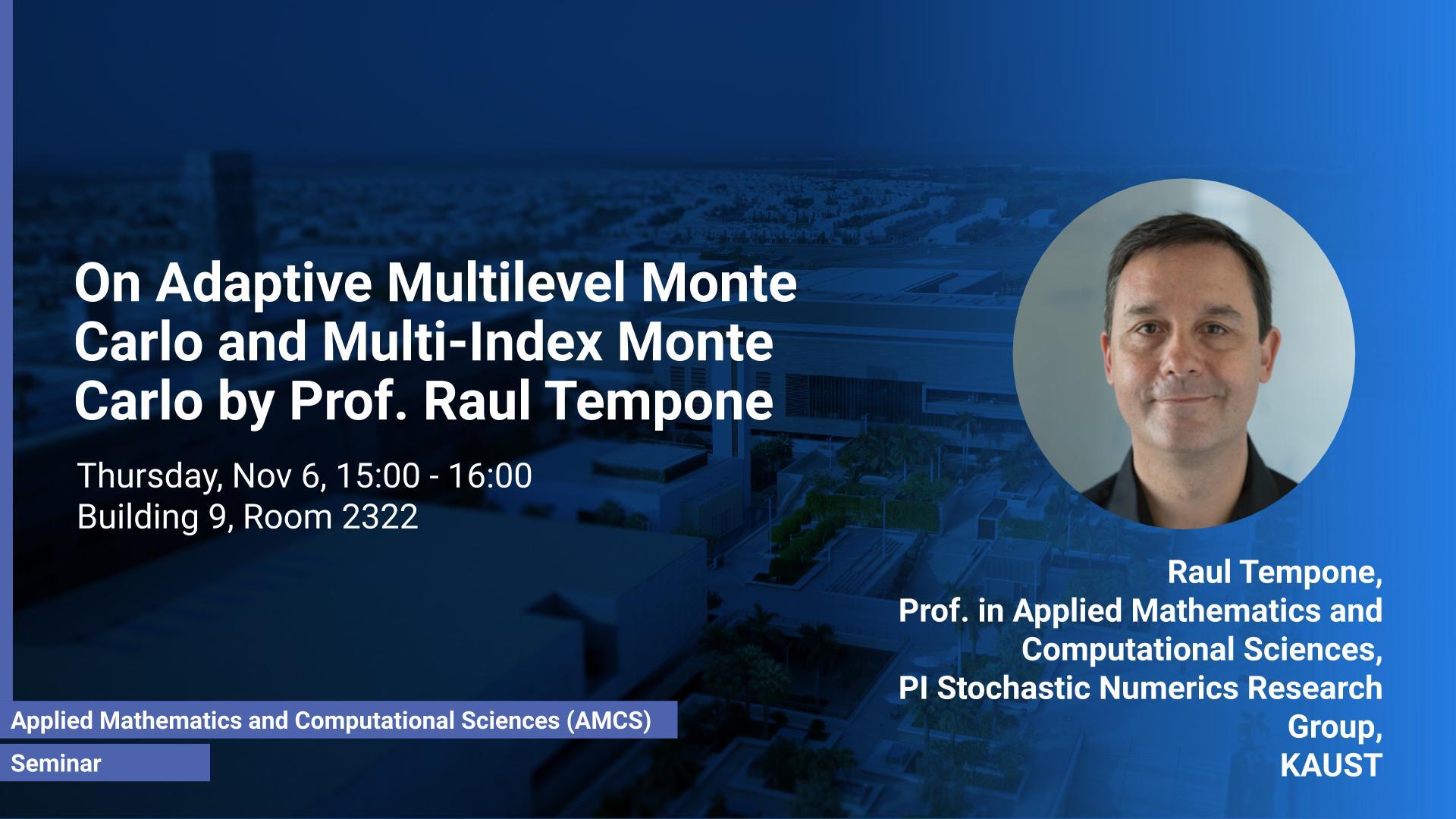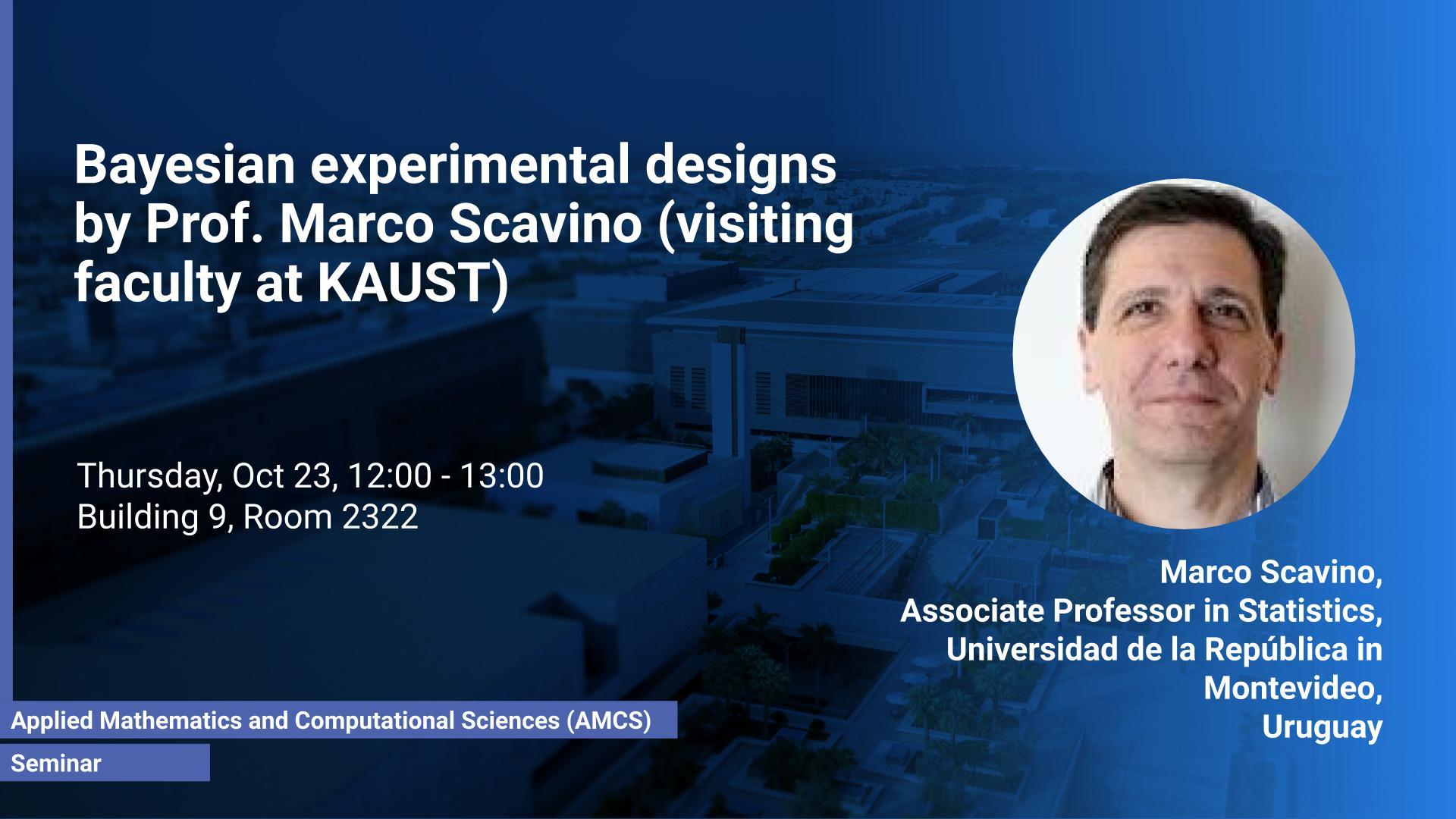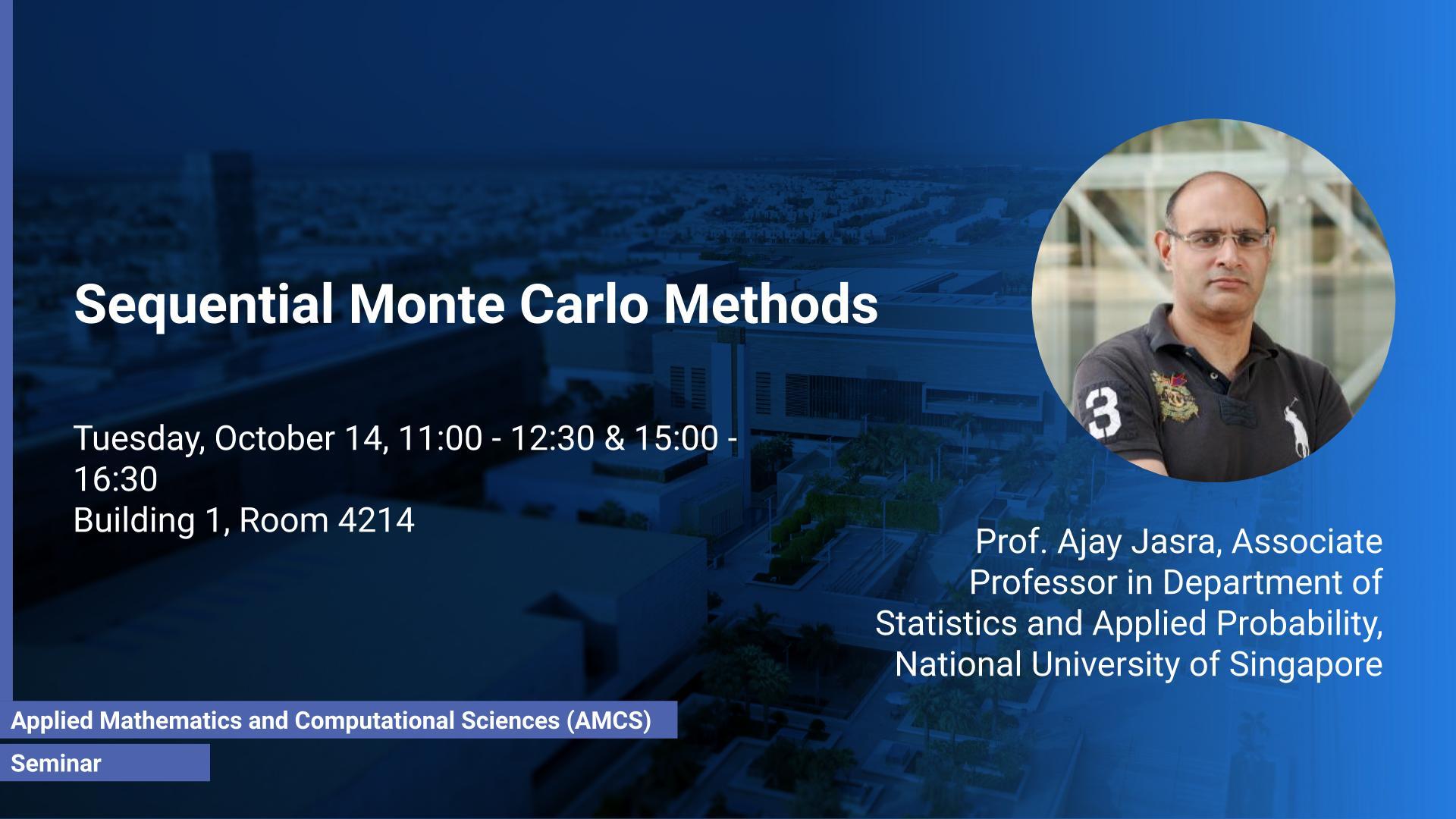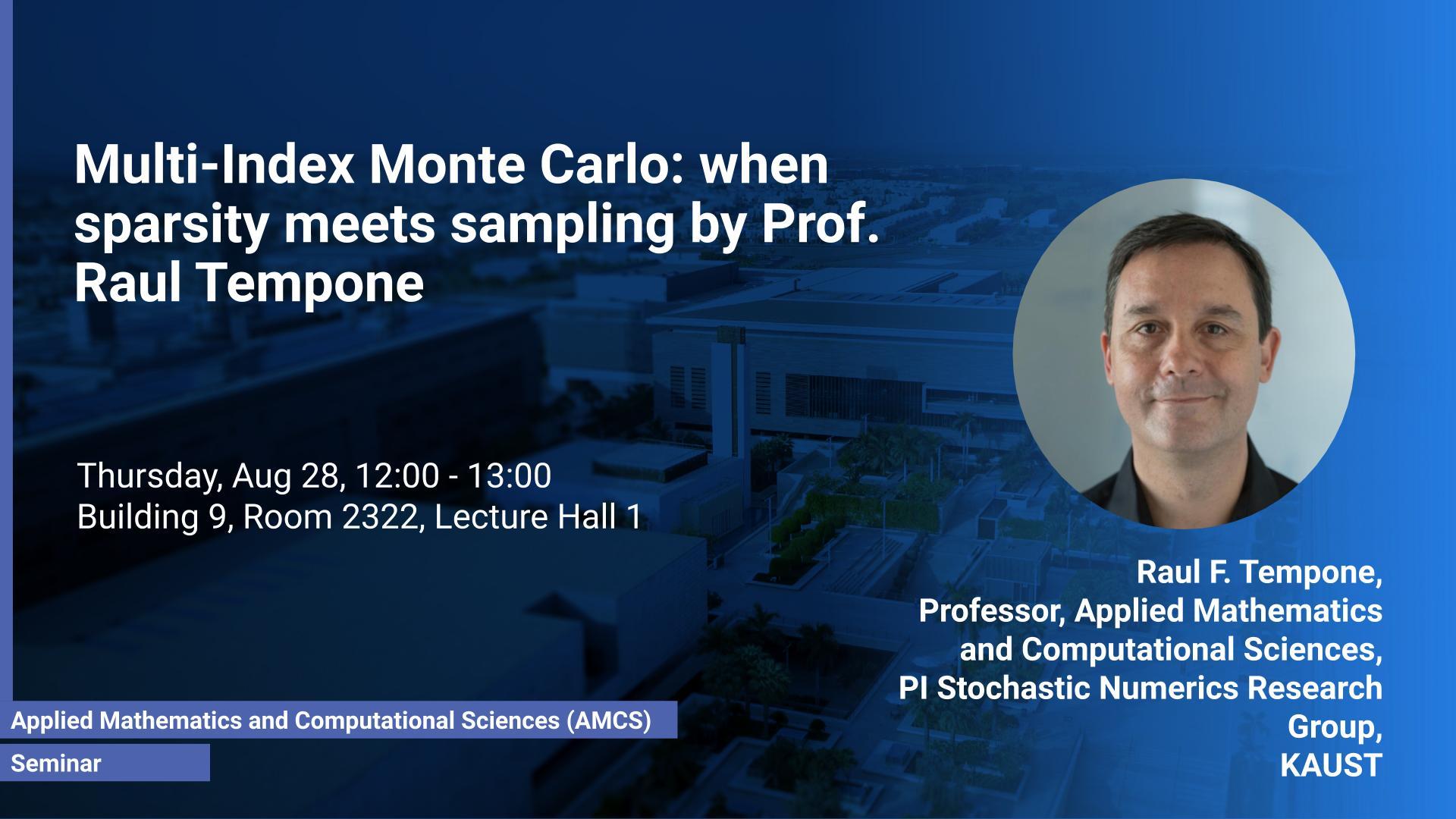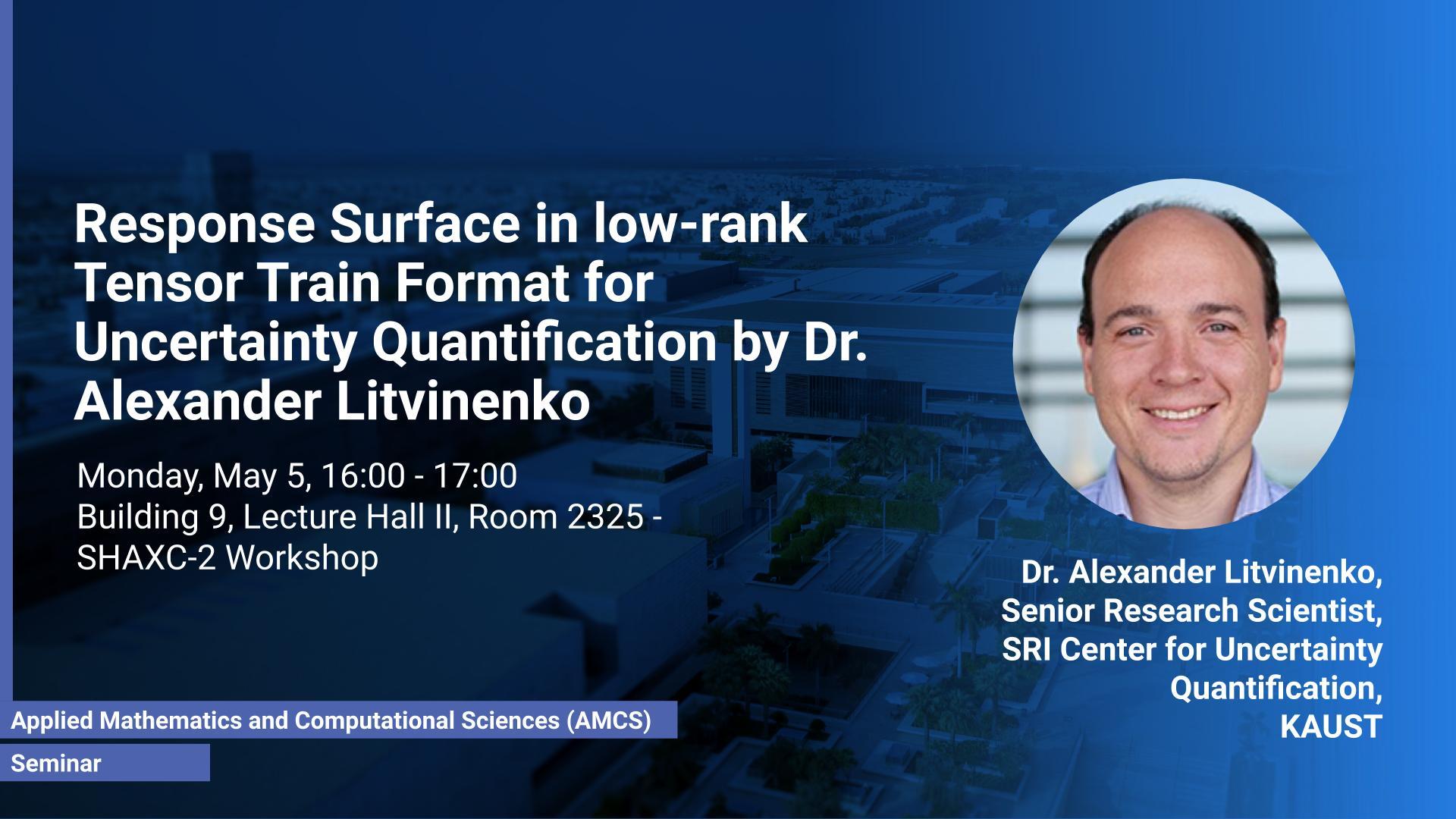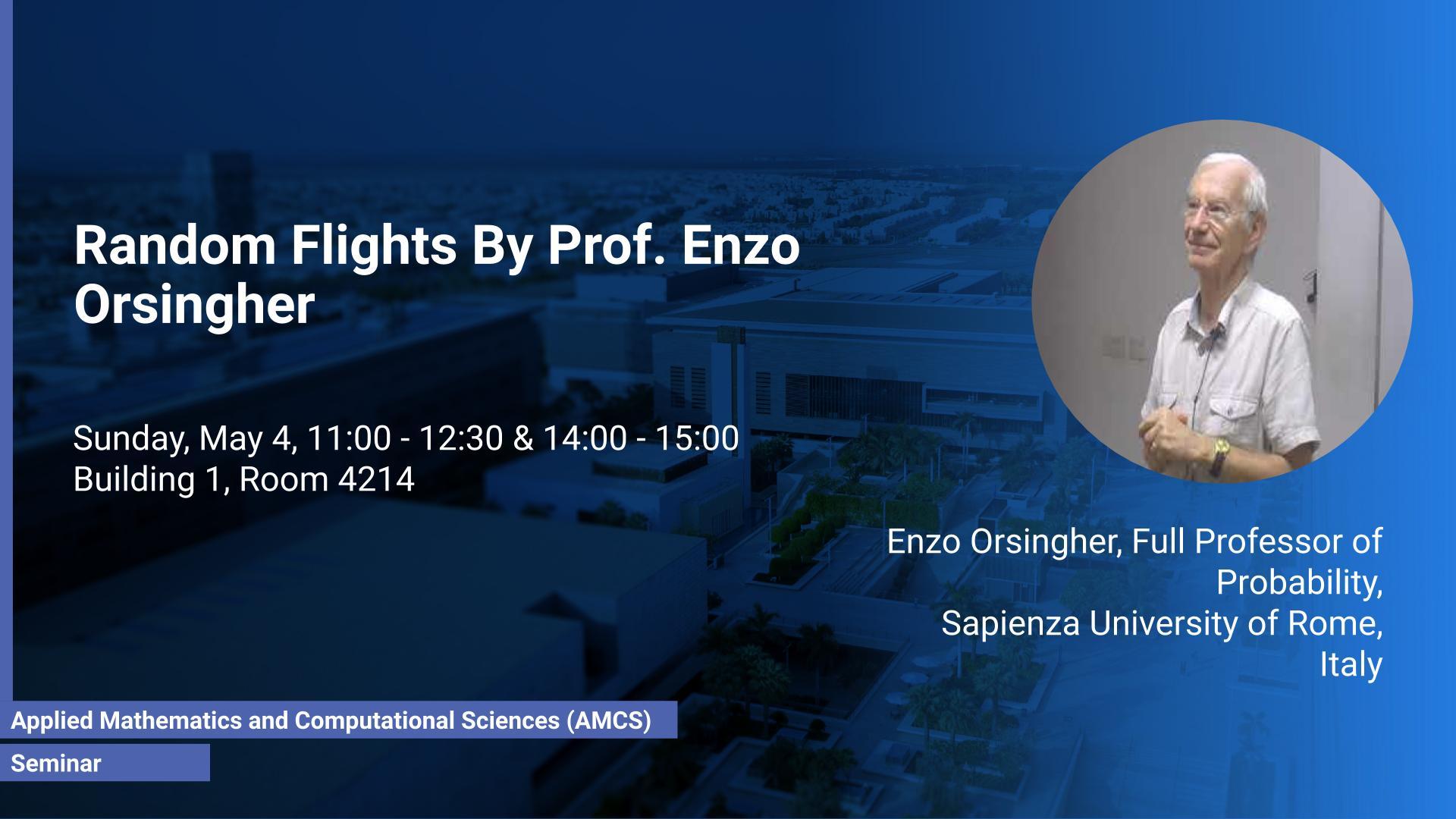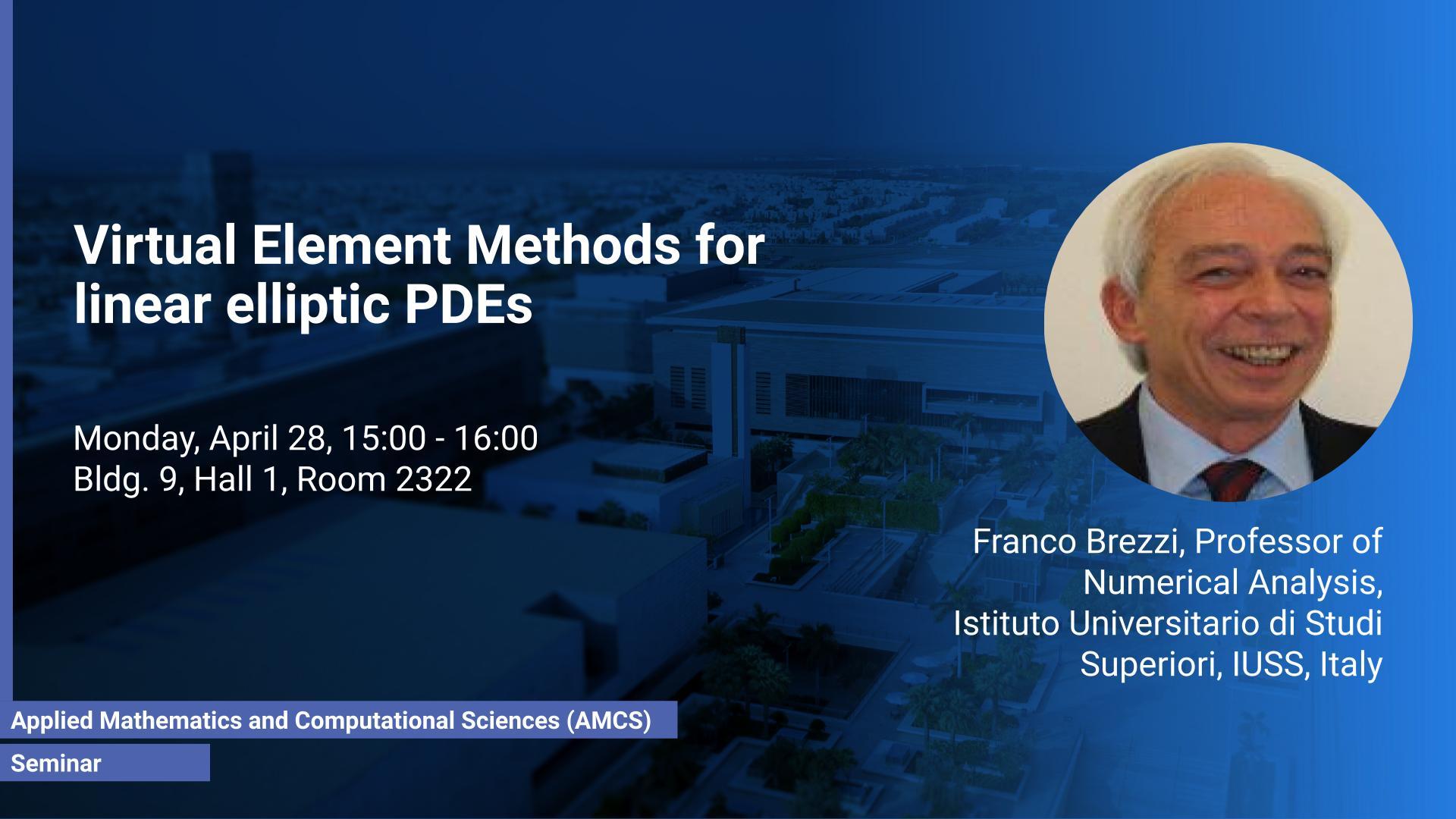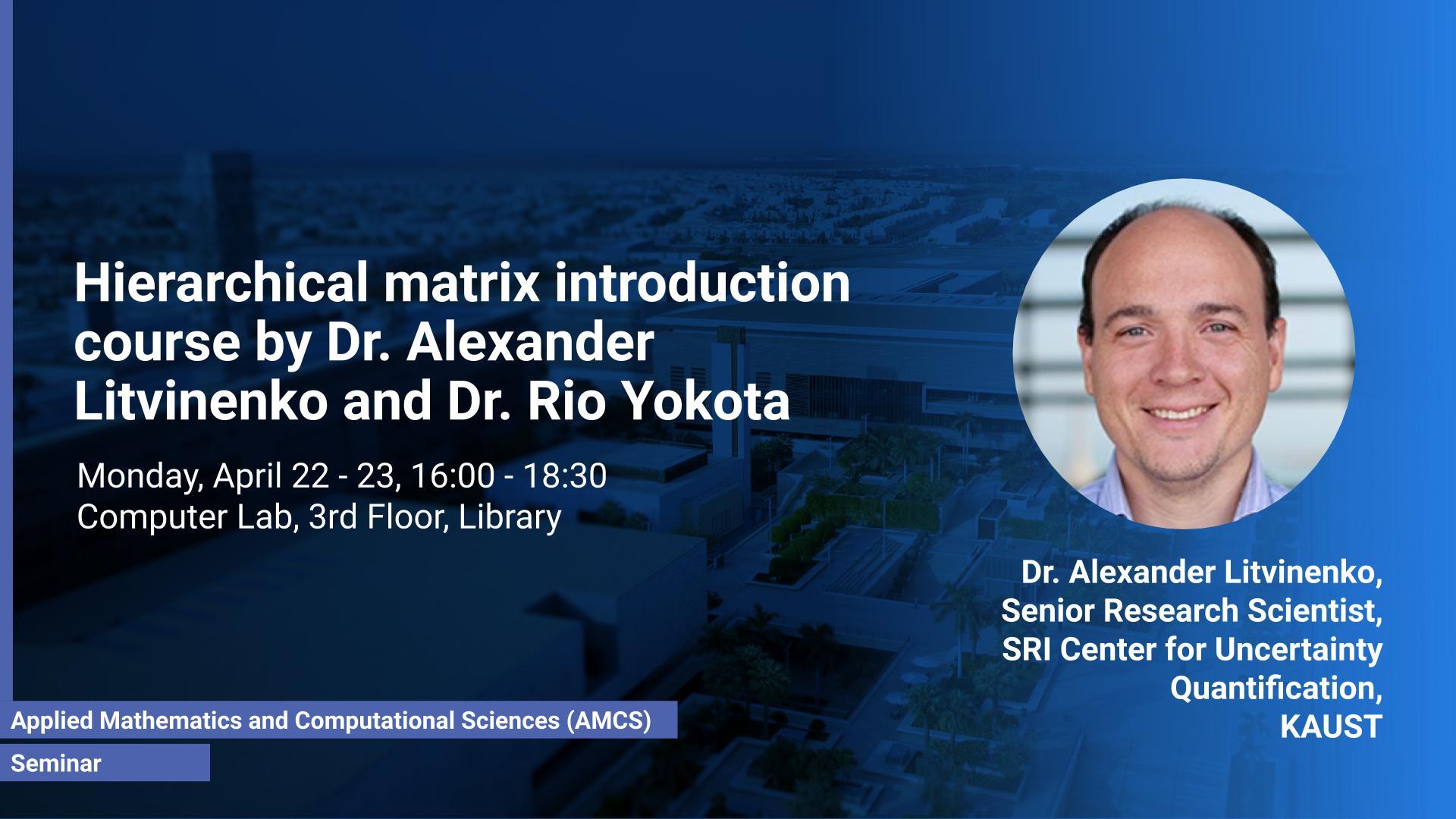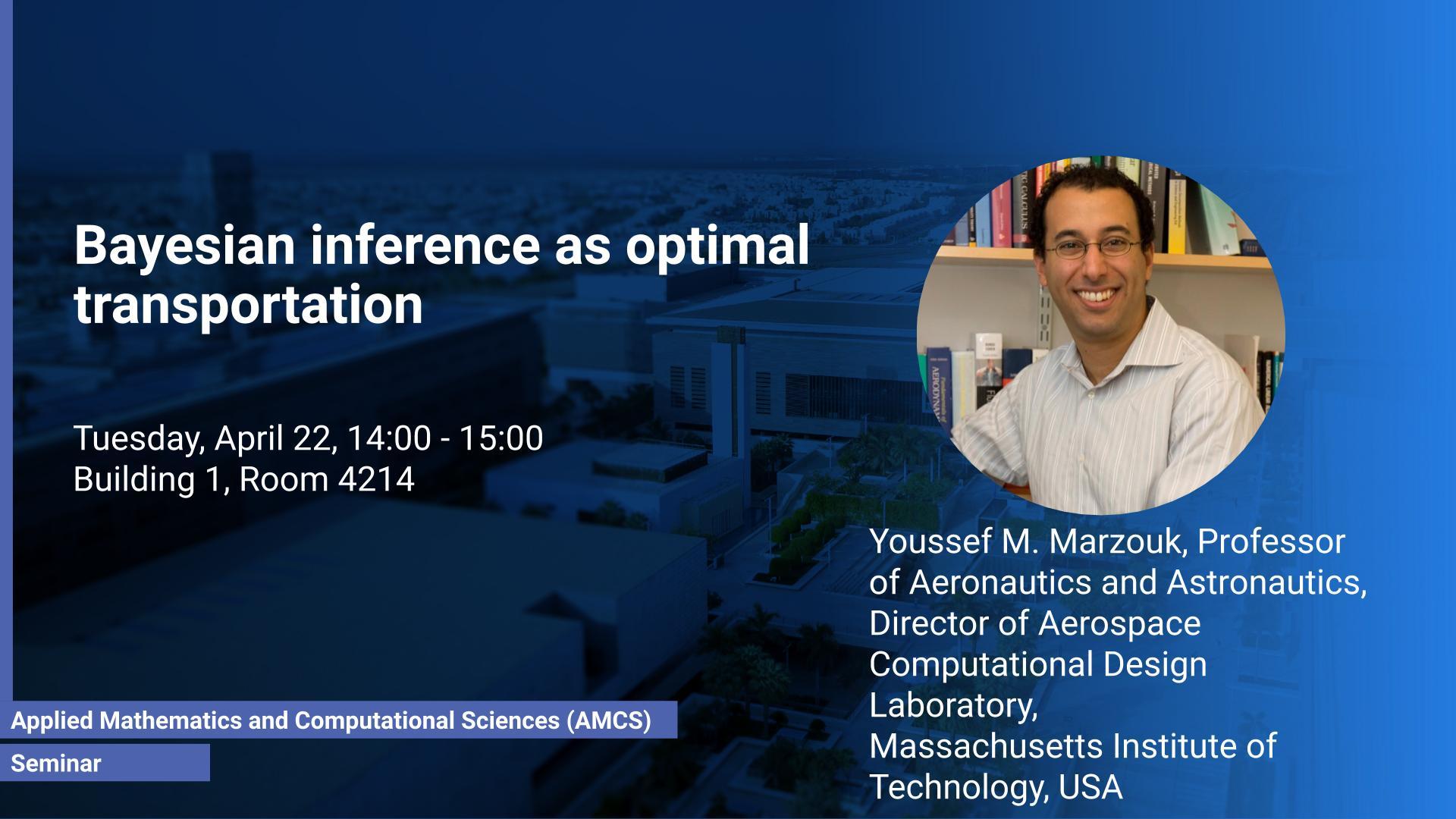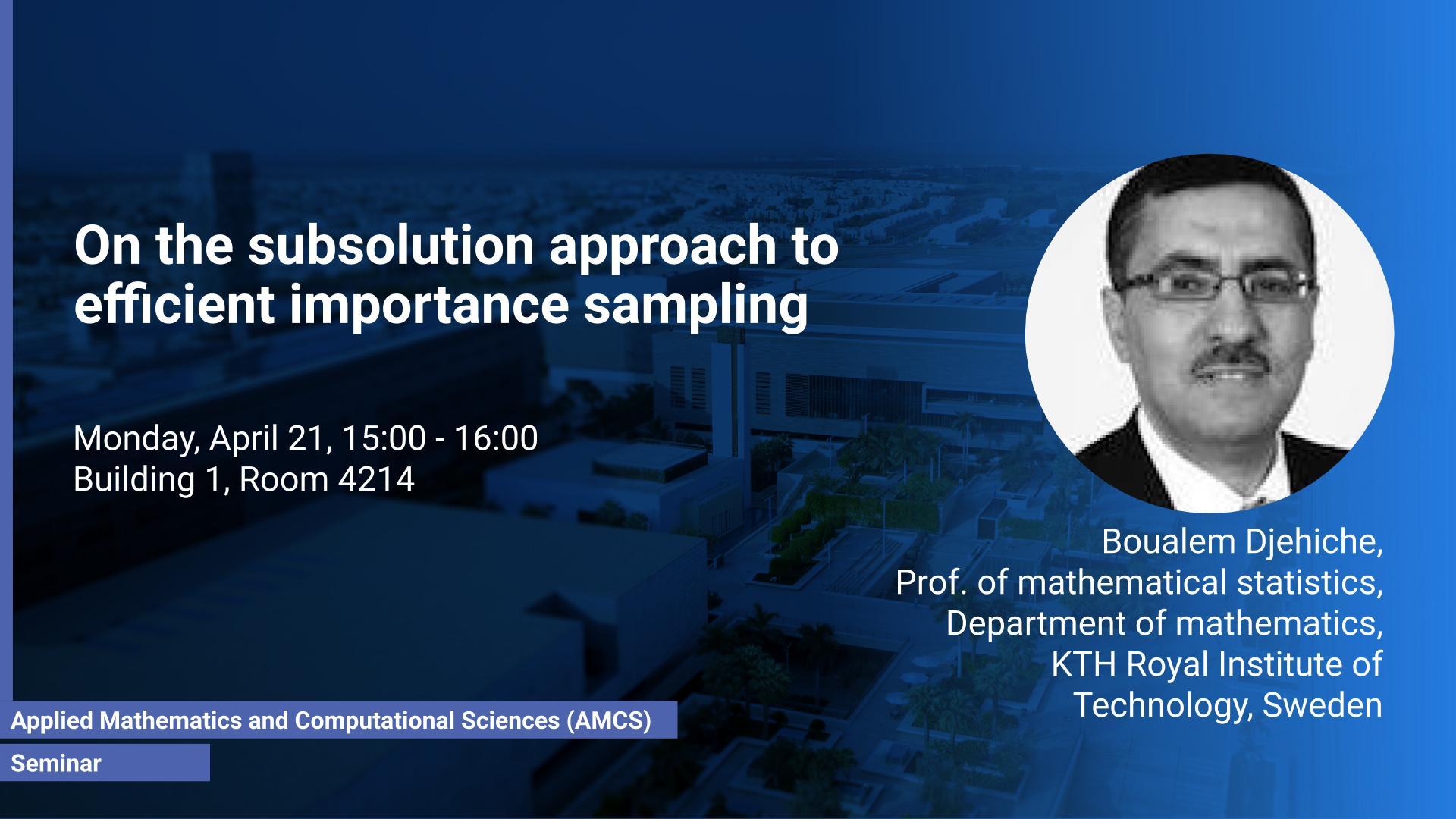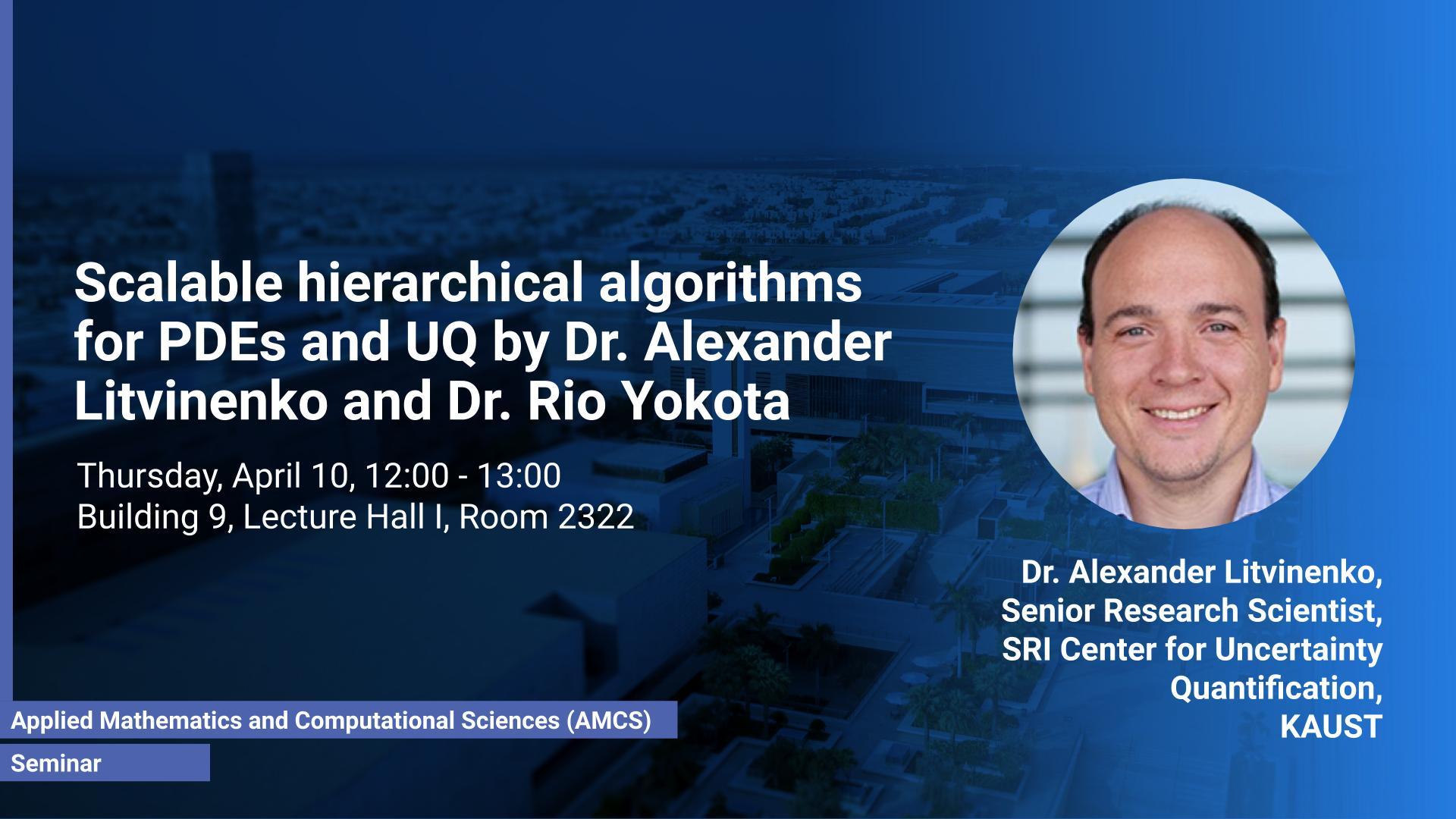Professor of mathematical statistics, KTH, Sweden
Tuesday, October 13, 2015, 14:00
- 15:00
Building 9, Lecture Hall, Room 2322
Contact Person
Abstract:
Time inconsistent performance crit
Thursday, September 10, 2015, 14:30
- 16:00
Building 1, Room 4214
Contact Person
Chebyshev nodes are well-known for their near-optimal polynomial interpolation and quadrature properties on intervals. In particular, the associated Lebesgue constant grows only logarithmically, whereas that associated to equispaced nodes grows exponentially.
Dr. Marco A. Iglesias, Assistant Professor in Scientific Computation, School of Mathematical Sciences, University of Nottingham
Tuesday, September 08, 2015, 14:30
- 16:00
Building 1, Room 4214
Contact Person
We present a novel regularizing ensemble Kalman method for solving PDE-constrained inverse problems. By merging ideas from iterative regularisation approaches and ensemble Kalman algorithms we design a derivative-free solver for generic inverse problems. The proposed method can be used to estimate parameters of large-scale PDE models in a black-box fashion.
Saturday, August 08, 2015, 12:30
- 13:30
KAUST
Contact Person
In this talk, I explore the application of single level and multilevel Monte Carlo methods for computing key quantities in a stochastic particle system within the mean-field framework.
Postdoctoral Fellows,
Stochastic Numerics Research Group
Sunday, May 03, 2015, 14:00
- 15:00
Pearl Hall, Ground Level, Al Marsa Yacht Club
Contact Person
This thesis focuses on the development and analysis of efficient simulation and inference techniques for Markovian pure jump processes with a view towards applications in dense communication networks. The first part of this work proposes novel numerical methods to estimate, in an efficient and accurate way, observables from realizations of Markovian jump processes.
Thursday, April 30, 2015, 16:00
- 17:00
Building 1, Room 4214
Contact Person
In biochemical systems, stochastic effects can be caused by the presence of small numbers of certain reactant molecules. In this setting, discrete state-space and stochastic simulation approaches were proved to be more relevant than continuous state-space and deterministic ones.
PhD Degree,
Statistics
Thursday, April 30, 2015, 11:00
- 12:00
Building 1, Room 4214
Contact Person
Experimental design can be vital when experiments are resource exhaustive and time-consuming. In this work, we carry out experimental design in the Bayesian framework. To measure the amount of information, which can be extracted from the data in an experiment, we use the expected information gain as the utility function, which specifically is the expected logarithmic ratio between the posterior and prior distributions.
Prof. Jacques Duysens, Systems Business Development Director for EMEA at ANSYS, Inc
Wednesday, April 29, 2015, 14:00
- 15:00
Building 1, Room 4214
Contact Person
Jacques DUYSENS, 47 years old, obtained his Civil Engineer Diploma in Electricity & Mechanics, and in Aerospace, from the University of Liège (Belgium) with the highest distinction.
His prior responsibility was as R&D Engineer in Powertrains Groups dynamics at RENAULT SA (France) in 1990. Three years later, he served as Director of the Simulation of Manufacturing Processes department (Assembly & Machining) within the Mechanical Process Direction.
Postdoctoral Fellows,
Stochastic Numerics Research Group
Monday, January 26, 2015, 14:00
- 15:00
Pearl Hall, Ground Level, Al Marsa Yacht Club
Contact Person
Markovian epidemic models are stochastic models belonging to a wide class of pure jump processes known as Stochastic Reaction Networks (SRNs) that have been mainly developed to model biochemical reactions. SRNs also have applications in neural networks, virus kinetics, and dynamics of social networks, among others.
Visiting Student,
Stochastic Numerics Research Group
Thursday, January 22, 2015, 16:00
- 17:00
Building 1, Room 4214
Contact Person
Core flooding experiments are always needed to be conducted before the application of Enhanced Oil Production (EOR) in the field, which is a great way to improve the oil recovery. In order to optimize existing resources and obtain the information efficiently, it is necessary to optimize these experiments.
Prof. Marco A. Iglesias, School of Mathematical Sciences, University of Nottingham
Sunday, January 18, 2015, 15:00
- 16:00
Building 1, Room 4214
Contact Person
Marco Iglesias received his PhD in 2008 from the Institute for Computational Engineering and Sciences, University of Texas at Austin. From 2008 and 2013 Iglesias held postdoctoral positions at the Department of Civil and Environmental Engineering at MIT as well as the Mathematics Institute at the University of Warwick . Since October 2013 Iglesias is an assistant professor in scientific computation at the University of Nottingham, U.K.
Tuesday, January 06, 2015, 09:00
- 17:00
Level 0 Auditorium, between Al-Jazri and Al-Kindi (buildings 4 and 5), KAUST
Contact Person
Thursday, November 06, 2014, 15:00
- 16:00
Building 9, Room 2322
Contact Person
We provide a quick glance into recently developed Adaptive Multilevel Monte Carlo (MLMC) Methods for the following widely applied mathematical models: (i) Itô Stochastic Differential Equations, (ii) Stochastic Reaction Networks modeled by Pure Jump Markov Processes and (iii) Partial Differential Equations with random inputs.
Marco Scavino, Associate Professor in Statistics, Universidad de la República in Montevideo, Uruguay
Thursday, October 23, 2014, 12:00
- 13:00
Building 9, Room 2322
Contact Person
In this talk, I will describe the main features that characterize a Bayesian framework for experimental design. A special emphasis will be devoted to the description of how to measure the information, conveyed by an experiment, about the unknown parameters of the statistical model used to describe the data uncertainty.
Prof. Ajay Jasra, National University of Singapore
Tuesday, October 14, 2014, 11:00
- 12:30
Building 1, Room 4214
Contact Person
This talk will provide a tutorial style introduction to sequential Monte Carlo methods, attempting to start from a basic introduction, to a coverage of some of the latest research developments.
Thursday, August 28, 2014, 13:00
- 14:00
Building 9, Room 2322, Lecture Hall 1
Contact Person
Last year I provided a quick glance into the research of my KAUST Stochastic Numerics group, giving particular emphasis on the activities of my KAUST students. There I also connected our KAUST research and our educational activities, including the Numerical Methods for Stochastic Differential Equations (AMCS 336) and Stochastic Methods for Engineers (AMCS 308) KAUST courses.
Senior Research Scientist,
Stochastic Numerics Research Group
Thursday, May 08, 2014, 12:30
- 13:30
Building 9, Lecture Hall II, Room 2325
Contact Person
In many Computational Science and Engineering applications, uncertainties in model, parameters, and initial condition, in concert with increasing computational power, have lead to an increasing interest in probabilistic solutions of large-scale problems. Even crude approximations of the probabilistic solution require many tens of deterministic solves and accurate ones often require thousands or millions.
Senior Research Scientist,
Stochastic Numerics Research Group
Monday, May 05, 2014, 16:00
- 17:00
Building 9, Lecture Hall II, Room 2325 - SHAXC-2 Workshop
Contact Person
Alexander Litvinenko joined the Stochastic Numerics Group and Strategic Initiative in Uncertainty Quantification at KAUST in 2013. He specializes in efficient numerical methods for stochastic PDEs, uncertainty quantification, and multi-linear algebra. He is involved in Bayesian update methods for solving inverse problems, with the goal of reducing the complexity both the stochastic forward problem as well as the Bayesian update by a low-rank (sparse) tensor data approximation.
Prof. Enzo Orsingher, Sapienza University of Rome, Italy
Sunday, May 04, 2014, 14:00
- 15:00
Building 1, Room 4214
Contact Person
In R1 we discuss the telegraph process and give the main distributional results. We consider also the case of the asymmetric telegraph process and use relativistic transformations for its probabilistic analysis.
Random motions in the plane with infinite and with a finite number of possible directions of motion are discussed.
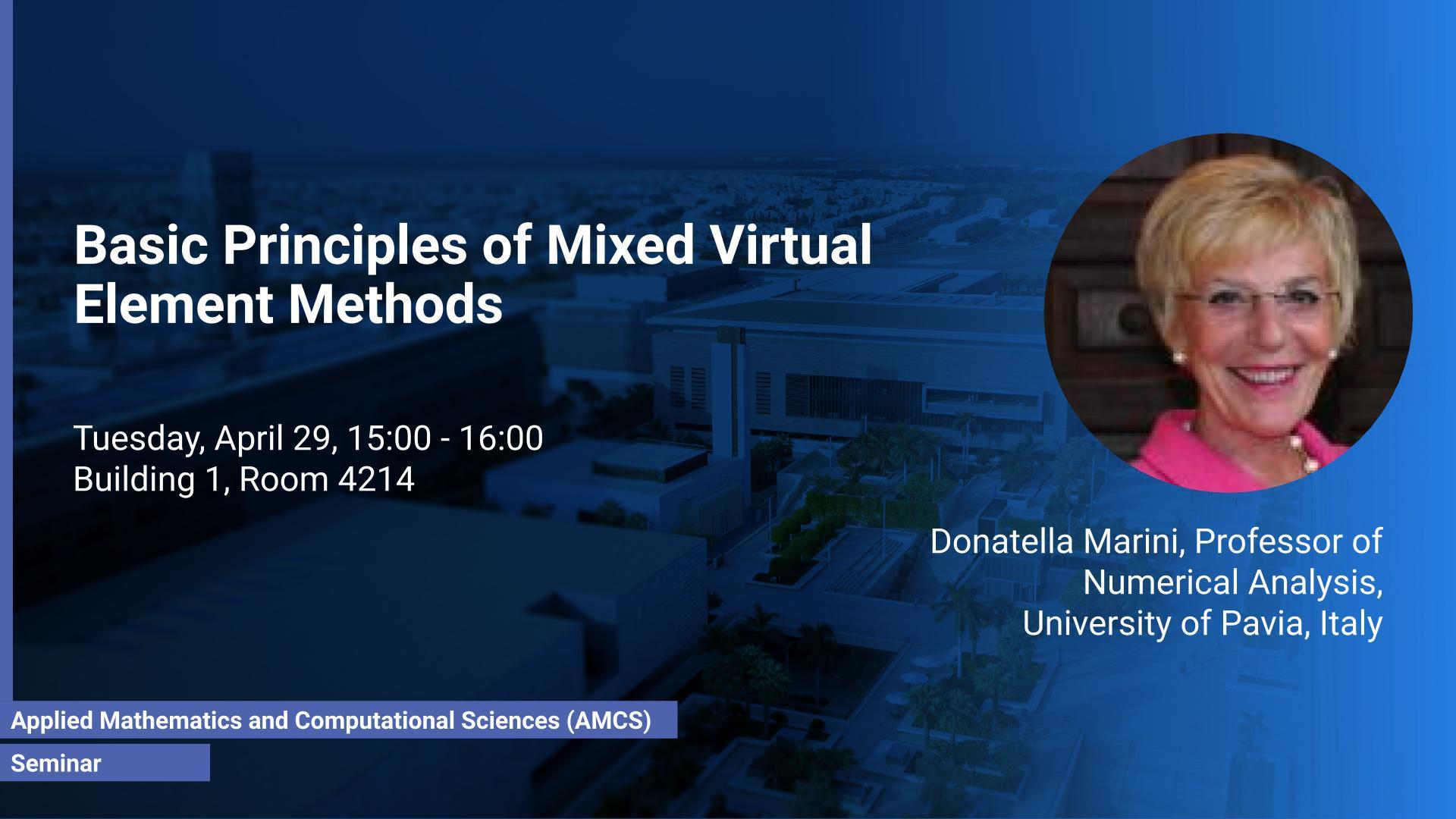
Prof. L. Donatella Marini
Tuesday, April 29, 2014, 15:00
- 16:00
Building 1, Room 4214
Contact Person
We present, in the simplest possible way, the extension of the Virtual Element Method to the discretization of H(div)-conforming vector fields. As we shall see, the methods presented here can be seen as extensions of the so-called BDM family to deal with more general element geometries (such as polygons with an almost arbitrary geometry). For the sake of simplicity, we limit ourselves to the 2-dimensional case, with the aim of making the basic philosophy clear.
Prof. Franco Brezzi, Istituto Universitario di Studi Superiori - IUSS, Italy
Monday, April 28, 2014, 15:00
- 16:00
Bldg. 9, Hall 1, Room 2322
Contact Person
The seminar will present the basic structure and the fundamental ideas behind the Virtual Element Methods, taking, for simplicity, the Laplace operator as toy example. The main features of the method will be sketched, together with the guidelines for its implementation and the essential mathematical instruments to be used in the analysis.
Senior Research Scientist,
Stochastic Numerics Research Group
Tuesday, April 22, 2014, 16:00
- 18:30
Computer Lab, 3rd Floor, Library
Contact Person
Alexander Litvinenko joined the Stochastic Numerics Group and Strategic Initiative in Uncertainty Quantification at KAUST in 2013. He specializes in efficient numerical methods for stochastic PDEs, uncertainty quantification, and multi-linear algebra. He is involved in Bayesian update methods for solving inverse problems, with the goal of reducing the complexity both the stochastic forward problem as well as the Bayesian update by a low-rank (sparse) tensor data approximation.
Prof. Youssef Marzouk, Massachusetts Institute of Technology, USA
Tuesday, April 22, 2014, 14:00
- 15:00
Building 1, Room 4214
Contact Person
Bayesian inference provides a natural framework for quantifying uncertainty in parameter estimates and model predictions, for combining heterogeneous sources of information, and for conditioning sequential predictions on data. Posterior simulation in Bayesian inference often proceeds via Markov chain Monte Carlo (MCMC) or sequential Monte Carlo (SMC), but the associated computational expense and convergence issues can present significant bottlenecks in large-scale or dynamically complex problems.
Professor of mathematical statistics, KTH, Sweden
Monday, April 21, 2014, 15:00
- 16:00
Building 1, Room 4214
Contact Person
The widely used Monte Carlo simulation technique where all the particles are independent and statistically identical and their weights are constant is by no means universally applicable. The reason is that particles may wander off to irrelevant parts of the state space, leaving only a small fraction of relevant particles that contribute to the computational task at hand. Therefore it may require a huge number of particles to obtain a desired precision, resulting in a computational cost that is too high for all practical purposes.
Senior Research Scientist,
Stochastic Numerics Research Group
Thursday, April 10, 2014, 12:00
- 13:00
Building 9, Lecture Hall I, Room 2322
Contact Person
Hierarchy is a key ingredient for achieving optimal arithmetic complexity and scalable communication complexity in algorithms. Fast Multipole Methods (FMM) and H-matrices share many common features that arise from their hierarchical nature. In this talk, Rio Yokota will illustrate the common features between FMM and H-matrices and how these features are favorable on computer architectures of the next generation.
